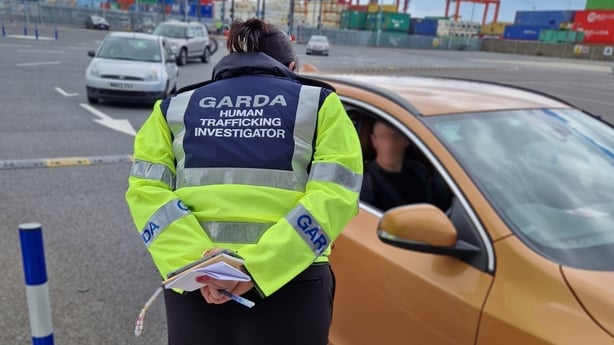Every time a General Election comes around - and many times in between - political parties make pledges to recruit more gardaí and increase overall numbers.
This election is no different. So, what's been proposed this time around, and will the promises be achievable?
What are the parties saying?
Currently, according to figures from September, An Garda Síochána has an 'available strength' of 13,916. That’s the total number of members minus those on maternity leave, secondments overseas, career breaks and on other such leave or assignments.
Almost all parties are promising some increase in those numbers, with many pointing to recent population increases as the rationale for it, although details from some have yet to be released in this campaign.
Fianna Fáil has said they want to recruit up to 5,000 gardaí over the course of the next five years, and reach a target "in the medium-term" of 20,000.
Sinn Féin is promising to increase garda numbers to 16,000 by opening a second garda training college and recruiting 900 to 1,100 every year for the next five years.
Fine Gael so far is pledging to "change how we recruit and train our gardaí", and proposing an increased trainee allowance, without giving a target number for those entering the force.
The Labour Party is also aiming to ensure the force has 16,000 members by 2029. They say they want to see 1,000 new gardaí in training each year, with the longer-term goal of an 18,000-strong force.
The Greens want 15,500 gardaí working by the end of their next term of office. That is to be achieved by hiring more civilian administration staff and technical experts, reforming training and rebuilding Garda Reserve numbers.

Independent Ireland says they want 1,000 new recruits per year for five years, which is to be helped by an "accommodation support scheme" to assist new garda recruits with housing costs.
The Social Democrats pledge that they will aim to have 18,000 gardaí in the medium term, to effectively police a growing population, as stated by the Garda Commissioner, Drew Harris.
People Before Profit - Solidarity have not specified numbers in their manifesto or campaign.
The current picture
The reality is that garda numbers have hovered around 14,000 over recent years.
The most recently available numbers for September 2024 say there are 14,125 members in total and 13,916 in available strength.
In January 2020, just before the current government was established, the total number of gardaí was 14,279, with the available strength listed at 14,002.
We need your consent to load this flourish contentWe use flourish to manage extra content that can set cookies on your device and collect data about your activity. Please review their details and accept them to load the content.Manage Preferences
The figures have remained stubbornly level despite multiple recruitment campaigns in that period, and inducements for trainees and new recruits offered, as well as an extension of the retirement age.
Those recruitment incentives were brought in after pledges made by the last government's parties during the 2020 General Election campaign.
At that time, Fianna Fáil pledged to make the force 16,000 strong in the lifetime of the government, Fine Gael pledged 15,000 gardaí by 2021, and the Green Party promised greater garda numbers - particularly community gardaí - without stating a target number.
So why has it proven difficult to increase garda numbers? The main reason is that the numbers being recruited and trained are only marginally higher than the number leaving or retiring.
If we take this year, despite government ambitions in the last two budgets to train 1,000 new student gardaí, 468 commenced the two-year training course in Templemore.
432 new members completed training and were sworn-in, while a further 26 former members returned to the force.
However, 374 members left through retirement and resignation. That leaves a net increase of 84.
It’s been a similar story in recent years, with a net increase of 100 last year and just 78 in 2022, according to Garda Press Office and Garda Representative Association data.
Despite this, the most recently available data (2022) from Europe shows that our garda numbers are above the European average. Albeit, the Eurostat calculations are based on our 2016 population figures.
We need your consent to load this flourish contentWe use flourish to manage extra content that can set cookies on your device and collect data about your activity. Please review their details and accept them to load the content.Manage Preferences
The European average is 341 police personnel per 100,000. Ireland has 351 gardaí per 100,000. Denmark and Finland, which have comparable populations, had much fewer with 194 and 137 police personnel per 100,000.
The Garda Representative Association President, Mark O'Meara, called on all parties "to examine the issues that are both dissuading people from applying for a career in An Garda Síochána and what is making the members we have leave the force."
"There is a financial aspect which clearly appears unattractive to possible recruits but there are other concerns including work life balance and people feeling unsafe and unsupported in their work."







